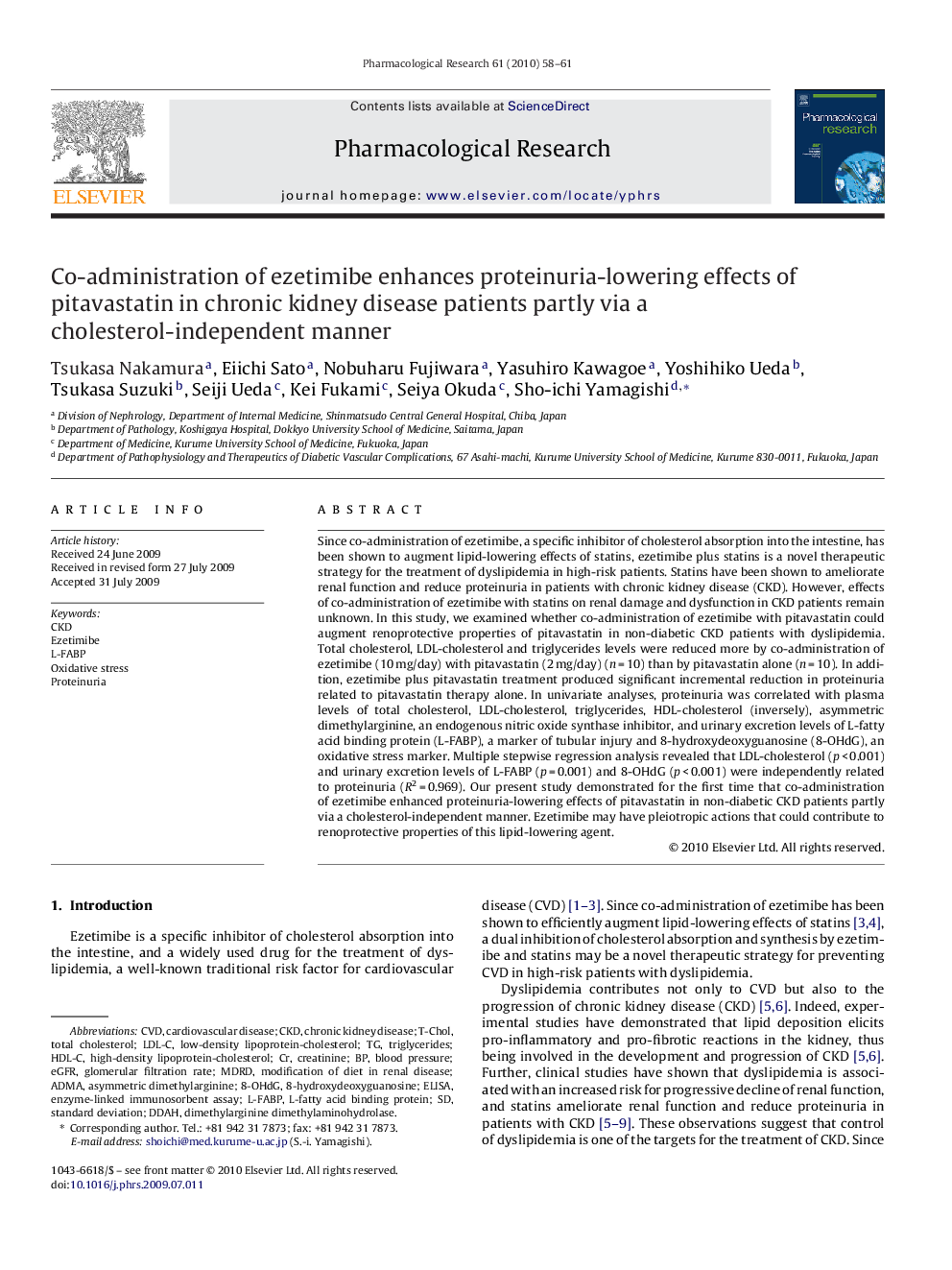| Article ID | Journal | Published Year | Pages | File Type |
|---|---|---|---|---|
| 2561755 | Pharmacological Research | 2010 | 4 Pages |
Since co-administration of ezetimibe, a specific inhibitor of cholesterol absorption into the intestine, has been shown to augment lipid-lowering effects of statins, ezetimibe plus statins is a novel therapeutic strategy for the treatment of dyslipidemia in high-risk patients. Statins have been shown to ameliorate renal function and reduce proteinuria in patients with chronic kidney disease (CKD). However, effects of co-administration of ezetimibe with statins on renal damage and dysfunction in CKD patients remain unknown. In this study, we examined whether co-administration of ezetimibe with pitavastatin could augment renoprotective properties of pitavastatin in non-diabetic CKD patients with dyslipidemia. Total cholesterol, LDL-cholesterol and triglycerides levels were reduced more by co-administration of ezetimibe (10 mg/day) with pitavastatin (2 mg/day) (n = 10) than by pitavastatin alone (n = 10). In addition, ezetimibe plus pitavastatin treatment produced significant incremental reduction in proteinuria related to pitavastatin therapy alone. In univariate analyses, proteinuria was correlated with plasma levels of total cholesterol, LDL-cholesterol, triglycerides, HDL-cholesterol (inversely), asymmetric dimethylarginine, an endogenous nitric oxide synthase inhibitor, and urinary excretion levels of L-fatty acid binding protein (L-FABP), a marker of tubular injury and 8-hydroxydeoxyguanosine (8-OHdG), an oxidative stress marker. Multiple stepwise regression analysis revealed that LDL-cholesterol (p < 0.001) and urinary excretion levels of L-FABP (p = 0.001) and 8-OHdG (p < 0.001) were independently related to proteinuria (R2 = 0.969). Our present study demonstrated for the first time that co-administration of ezetimibe enhanced proteinuria-lowering effects of pitavastatin in non-diabetic CKD patients partly via a cholesterol-independent manner. Ezetimibe may have pleiotropic actions that could contribute to renoprotective properties of this lipid-lowering agent.
